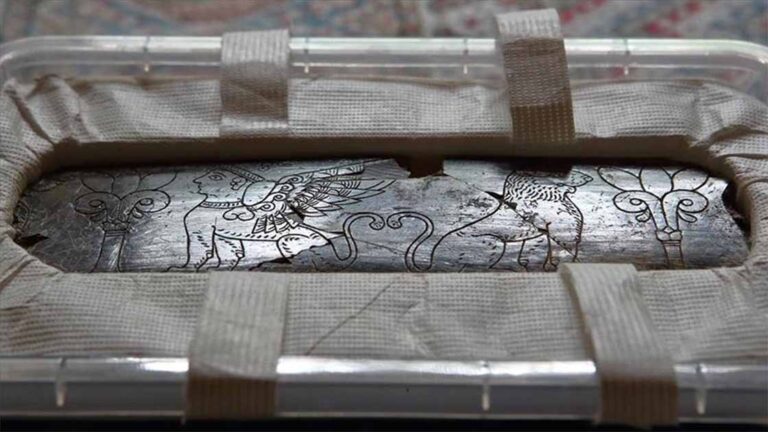During excavations in Hattusa, capital of the Hittite kingdom in the late Bronze Age, archaeologists discovered a unique object made of Hattusa ivory, approximately 2,800 years old. During the 117th year of excavations here, the northwest slope of the Great Fortress area revealed this important work of art, measuring almost 30 centimeters (1 foot) in length and 10 centimeters in width, made in ivory with intricate engravings.
Lion: a symbol of power
The design includes a sphinxa lion and two trees of life, allowing some understanding of the artistic motifs and symbolic elements prevalent in the era in which it was created. THE lionsymbolizing power and royalty, is a recurring motif in the iconography of ancient civilizations.
Evidence for this association dates back to prehistoric times cave paintingsas well as artifacts from antiquity Sumerian and Egyptian cultures dating back to 3000 BC. The royal significance of the lion is illustrated in various ancient monuments, such as the impressive lion gates found at Hattusa. Although the exact purpose of the artwork or artifact remains speculative at this time, it is plausible that it is a component of a wooden box.

The Lions Gate in Hattusa. (robnaw /Adobe Stock)
The artistic influence of Hattusa Ivory beyond borders
In a statement to Anadolu AgencyAndreas Schachner, who has led the excavation since 2006 on behalf of the German Archaeological Institute, revealed that the newly discovered artifact was in the Iron Age layer of the Hattusa archaeological site.
“Most likely, in its time, it was added as decoration to a wooden crate or wooden piece of furniture. The work is broken on its right and left sides, but the upper and lower sides are intact. Thus, it is can deduce that it was in reality longer. This work is a unique piece for Bogazkoy. For the first time, we are confronted with a work decorated with such an intense and magnificently worked scene. Extensive excavations have been carried out in Bogazkoy for the Iron Age, but such detailed work has never been encountered before,” explained Schachner.
By examining both the stage of development, iconography and style used, a deeper understanding of the connections between Boğazköy and the southeast Anatolia can be evaluated, Schachner explained.
This exploration extends to the artistic relationships that existed between Boğazköy and the southwestern regions and Greece during its historical period, particularly during the first millennium BC. Such analysis allows us to unravel the complex web of cultural and artistic interactions that shaped Boğazköy’s artistic identity during this important era, reports Arkéonews.
Hattusa: a center of trade and royalty in the ancient world
Hattusa was the political and administrative center of Hittite Empirewhich flourished from around 1600 to 1180 BC, strategically located in the center of the world ancient trade routes. Around 1180 BC, Hattusa, along with several other Hittite cities, were destroyed, probably due to a combination of internal unrest and external invasions by the Sea Peoples. The reasons for the collapse of the Hittite Empire remain a subject of scientific debate, as does the disappearance of Harappa or the Indus Valley Civilization.
The Hattusa site was rediscovered in the early 20th century and systematic archaeological excavations began in the 1930s. The excavations uncovered a multitude of objects, cuneiform tablets, and an overview of the Hittite civilization. In 1986, Hattusa was designated a UNESCO World Heritage Site, recognizing its historical and cultural significance. The site attracts archaeologists, historians and tourists interested in exploring the remains of this ancient civilization.
Schachner further mentioned that once the necessary scientific studies are completed, the newly discovered artifact will be exhibited at the Boğazköy Museum. This exhibition will be an opportunity for the public to appreciate the historical and cultural importance of the discovery.
“We are very happy and excited to have found this artifact. It is the first time that we are confronted with such an artifact that gives us information about the art of this period. It is a really important object,” concluded the professor. for the whole enthusiastic archeology team.
Top image: A 2,800-year-old Hattusa ivory ornament was recently discovered and features depictions of sphinxes, lions and trees of life on its ivory surface. Source: Anadolu Agency
By Sahir Pandey


